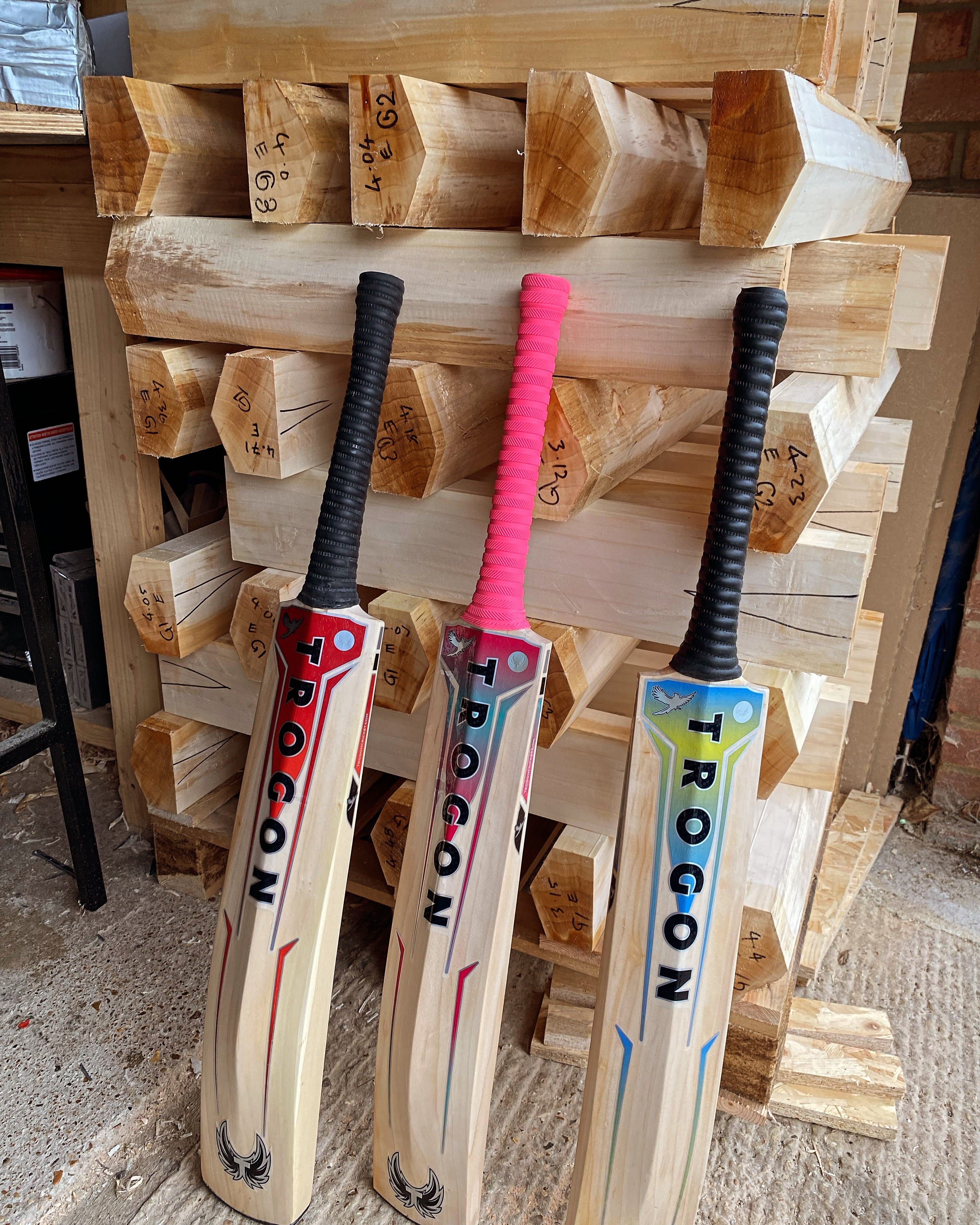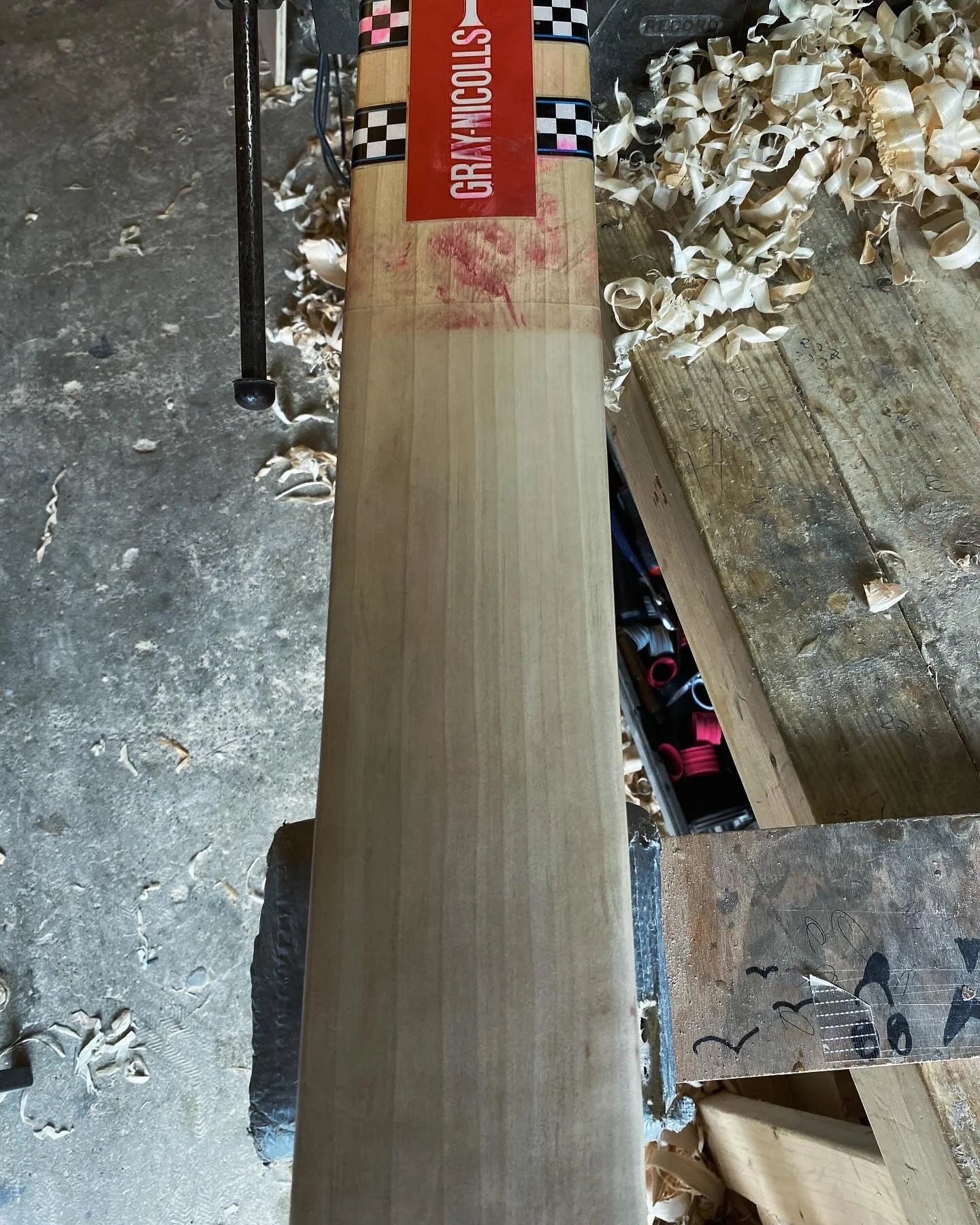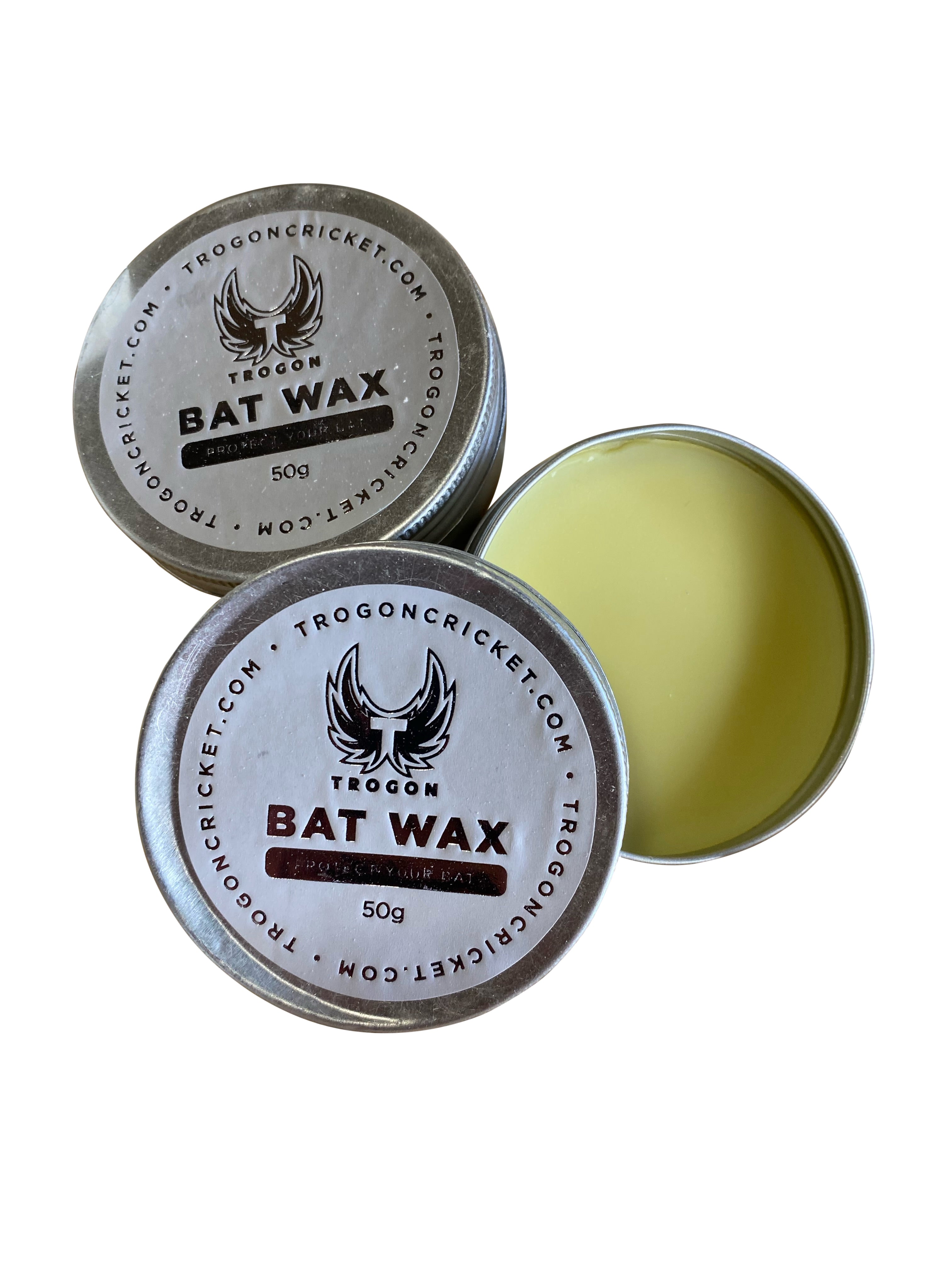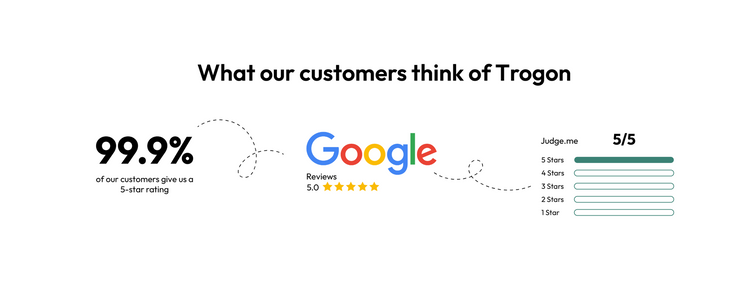At Trogon Cricket, we take immense pride in hand-crafting high-quality cricket bats, and a critical aspect of our bat-making process is ensuring the proper moisture content during bat pressing.
But first, why do we add water to the cleft before we press?
Applying water to a cleft before pressing helps maintain optimal moisture content, preventing the wood from becoming too brittle or cracking under pressure. This step ensures the wood remains flexible enough for even compaction, resulting in a well-pressed, durable cricket bat.
Right, let's crack on (pardon the pun) - In this blog post, we'll delve into why moisture matters in bat pressing, how it affects the process, and why proper knocking in is crucial for the bat's performance.
What is Cricket Bat Pressing?
Bat pressing is a crucial step in the cricket bat manufacturing process where a bat's blade is subjected to controlled pressure.
This pressure compacts the wood fibers, hardening the bat’s surface to withstand the impact of the ball. Proper bat pressing enhances the bat's "ping" or rebound effect (this blog post is certainly worth a read), contributing to better shot power and control.
It also reduces the amount of knocking in required, which is a process of further conditioning the bat to prepare it for play.
However, the effectiveness of bat pressing can be significantly influenced by the moisture content of the wood, which is why managing moisture levels is a key part of our bat-making process at Trogon Cricket.
The below image, although on its side, shows a picture of me spraying the cleft before the cleft its put under huge pressure on the press.


The above image shows me pressing a raw cleft and applying water to the cleft throughout the pressing process. There is nothing worse than pressing a cleft (which is expensive) only for it to crack under pressure
The Importance of Moisture Content in Bat Pressing
1. Wood Flexibility and Hardness
The moisture content in the wood affects its flexibility and hardness, which are critical factors in bat pressing. If the wood is too dry, it becomes brittle and can crack or split under pressure.
Conversely, if the wood is too wet, it can become overly flexible and difficult to press properly, leading to a lack of the desired hardness and resilience in the bat's surface.
Maintaining an optimal moisture level is essential for achieving the right balance between flexibility and hardness, ensuring that the bat is both durable and responsive - for more information on how moisture impacts wood have a read of this really interesting blog post titled 'Everything You Need to Know About Moisture Content of Wood' by reliance timber.
There are two types of moisture here. Our clefts are dried to between 12%-15% moisture content, which is perfect for bat making. The water we add to the cleft is there to help prevent the cleft from cracking under pressure, the water we add to the cleft during this process has little or no impact on the overall moisture level of the cleft.
2. Impact on Bat Pressing Quality
The quality of bat pressing is directly related to the wood's moisture content. Wood with the right moisture balance (12%-15%) allows for even and consistent compaction of the fibers during pressing.
If the wood is too dry, the pressing process may lead to uneven compaction, resulting in weak spots that can compromise the bat’s integrity. On the other hand, overly moist wood can lead to an ineffective press, where the bat fails to achieve the necessary hardness and may even deform over time.
3. Durability and Longevity
Bat durability is something we take incredibly seriously. Properly pressed bats, with the correct moisture levels, are more resistant to cracking, splitting, and other forms of damage. This durability is especially important for players of all standards of cricket, especially junior players, we all know how young kids look after their bats so we aim to make every bat last the rigours of play but also the rigours of being used by kids (as the father of 2, I'm fully aware that they don't look after bats or anything for that matter very well)
Knocking-In: Complementing the Pressing Process
Even with bat pressing, the process of knocking in remains essential for all bats. Knocking in involves further compacting the bat's fibres, particularly around the edges and toe, which are most vulnerable to damage.
This process helps to condition the bat for match conditions, reducing the risk of cracks and ensuring that the bat performs at its best - I have written an extensive blog post about knocking-in your cricket bat which is certainly worth a read to make sure you are doing it correctly.
How to knock in your cricket bat/h4>
Start by gently knocking the mallet across the face of your new cricket bat. I usually try and breakdown the bat into different sections to make sure I knock it in properly and evenly. When knocking in the edges, use glancing blows. You need to aim for 5-6 hours of knocking in.
Below are the top-line knocking-in tips and why it's important.
1. Preparing the Bat for Play
Knocking in is a continuation of the pressing process, further hardening the bat’s surface to withstand the impact of the ball. This additional compaction is crucial, especially if the bat was pressed with higher moisture content, which can lead to initial softness. Proper knocking-in ensures that the bat reaches the desired level of hardness and is fully prepared for competitive play.
2. Enhancing Performance
A well-knocked-in bat not only lasts longer but also performs better. By evenly distributing the stress across the bat's surface, knocking in enhances the bat's sweet spot, (whether a high, low or middle sweet spot), allowing players to execute powerful and precise shots.
3. Protecting Against Damage
Bats that are not adequately knocked in are more susceptible to damage, such as surface cracks or splits. This is particularly true for bats that may have had slightly higher moisture content during pressing, as they require additional conditioning to reach optimal performance levels.
Managing Moisture Content at Trogon Cricket
At Trogon Cricket, we understand the critical role that moisture plays in the bat pressing process. Our approach involves:
- Careful Selection of Clefts: We choose willow clefts with optimal moisture content (12%-15%), ensuring they are neither too dry nor too wet. This selection process is crucial for achieving the best results during pressing.
- Controlled Environment: Our workshop environment is carefully controlled to maintain stable humidity levels, preventing unwanted fluctuations in the wood's moisture content when the clefts are waiting to be pressed and made into bats.
- Precision in Pressing: Our custom-made pressing machines allow us to apply precise pressure, taking into account the moisture levels of each cleft. This precision ensures that each bat is pressed to the highest standards.
Conclusion: The Trogon Cricket Difference
Moisture content plays a vital role in the quality and effectiveness of bat pressing, directly impacting a cricket bat's performance and durability. At Trogon Cricket, we are committed to managing moisture levels meticulously, ensuring that our bats are pressed perfectly for optimal hardness and resilience.
We provide cricket bats in all grade 1, grade 2, and grade 3—catering to players of all levels, from junior cricketers to seasoned club crickets. Our bats are available in various shapes, sizes, and weights, ensuring that every player can find the perfect fit.
Buying With Confidence from Trogon
If you've reached this point, I sincerely thank you for reading it all through. Your interest and support mean the world to me, and it's greatly appreciated.
Whether you're here to learn more about our cricket bats or other products or just out of curiosity, your engagement makes a real difference. Thank you for being part of our Trogon journey.

Trogon Product Guarantee
6-month guarantee on all cricket bats. That means if you purchase a bat through us and it breaks, as long as it has been knocked in properly, we will replace it like for like. This is our commitment to you on top of your statutory protections when buying products online.
Find Cricket Bat Protection Options
Click on the below link and find the perfect cricket bat protection options that we offer at Trogon Cricket.






























